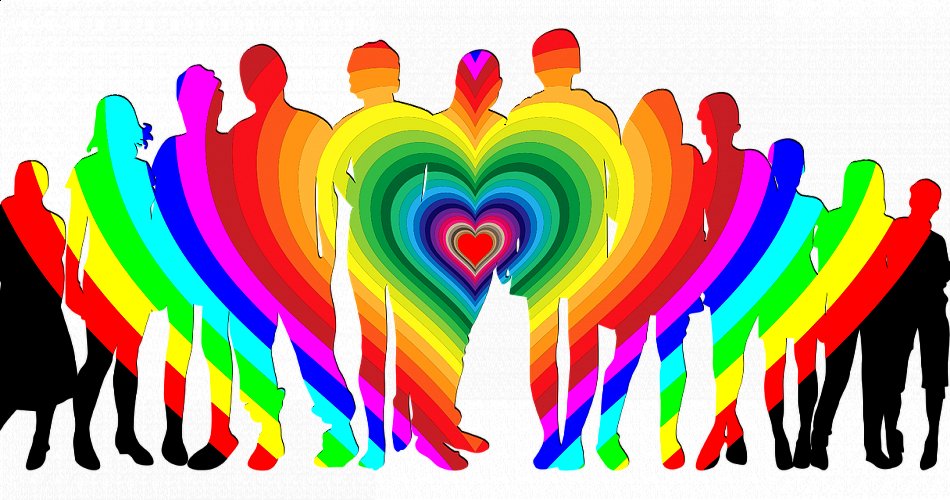Understanding Gender Identity
Published on 9th March, 2022

Today, more people than ever are exploring their gender identity and gender expression. I work with many clients who have questions and doubts about who they are with respect to their gender. Unfortunately, this is an area of mental health that is under-researched and often overlooked in the graduate training of psychotherapists and psychologists.
Here, I hope to give an overview of some of the basic concepts when talking about gender, the impact that gender identity issues can have on mental health, and how to support someone as they may be going through gender exploration or transition.
Gender identity is your inner sense of being a girl/boy, man/woman, both, neither, some other gender, or no gender at all.
Sometimes one’s gender identity is outside the two most common categories of male or female. People who feel this way may use the term nonbinary.
For transgender people, their gender identity does not match the sex that they were assigned at birth. It is an umbrella term that can include people who identify as non-binary, and those with no gender, multiple genders, or other gender identities.
We use the term cisgender for those whose sex assigned at birth matches their gender identity.
Gender expression refers to the presentation of their gender identity, typically through their appearance, dress, and behaviour. This may or may not reflect their inner gender identity based on cultural expectations. For example, wearing a dress is predominantly considered a “feminine” gender expression, and wearing a tuxedo is considered a “masculine” gender expression. Such expectations are culturally defined and vary across time and culture.
Gender identity is different from sexual orientation. Sexual orientation refers to the types of people towards which one is sexually attracted. People who are transgender have the same diversity of sexual orientations as people who are cisgender.
Some people who are trans or nonbinary may experience gender dysphoria. Gender dysphoria relates to a person’s thoughts or feelings that the gender they were assigned at birth is not consistent with their experienced or expressed gender, and that this results in clinically significant distress and discomfort around their identity.
Not all transgender people experience gender dysphoria, and although gender dysphoria can begin in childhood, some people may not experience it until after puberty at any age in their life.
Transgender people face discrimination, violence, and barriers to healthcare that can all contribute to the increased chance of mental health concerns. They can face discrimination, harassment and violence, in school, their workplace, and at home. They can have low self-esteem and can socially isolate themselves, especially in a society that is intolerant of seeing gender beyond a strict binary of male/female. Gender dysphoria is associated with higher rates of suicide, depression, eating disorders, anxiety, substance abuse, and psychological trauma.
Diagnosing Gender Dysphoria
Psychology and mental health treatment has an ugly history of pathologizing sexuality and gender identity concerns. Fortunately, over the past few decades we have begun to move away from classifying diverse experiences of gender as mental disorders.
The current Diagnostic and Statistical Manual of Mental Disorders (DSM-5) provides one overarching diagnosis of gender dysphoria with separate specific criteria for children and for adolescents and adults.1
For adolescents and adults, the DSM-5 defines gender dysphoria as a marked incongruence between one’s experienced/expressed gender and their assigned gender, lasting at least 6 months, as manifested by at least two of the following:
A marked incongruence between one’s experienced/expressed gender and primary and/or secondary sex characteristics (or in young adolescents, the anticipated secondary sex characteristics)
A strong desire to be rid of one’s primary and/or secondary sex characteristics because of a marked incongruence with one’s experienced/expressed gender (or in young adolescents, a desire to prevent the development of the anticipated secondary sex characteristics)
A strong desire for the primary and/or secondary sex characteristics of the other gender
A strong desire to be of the other gender (or some alternative gender different from one’s assigned gender)
A strong desire to be treated as the other gender (or some alternative gender different from one’s assigned gender)
A strong conviction that one has the typical feelings and reactions of the other gender (or some alternative gender different from one’s assigned gender)
To meet the criteria for the diagnosis, the condition must also be associated with clinically significant distress or impairment in social, occupational, or other important areas of functioning.
The DSM-5 defines gender dysphoria in children as a marked incongruence between one’s experienced/expressed gender and assigned gender, lasting at least 6 months, as manifested by at least six of the following (one of which must be the first criterion):
A strong desire to be of the other gender or an insistence that one is the other gender (or some alternative gender different from one’s assigned gender)
In boys (assigned gender), a strong preference for cross-dressing or simulating female attire; or in girls (assigned gender), a strong preference for wearing only typical masculine clothing and strong resistance to the wearing of typical feminine clothing
A strong preference for cross-gender roles in make-believe play or fantasy play
A strong preference for the toys, games, or activities stereotypically used or engaged in by the other gender
A strong preference for playmates of the other gender
In boys (assigned gender), a strong rejection of typically masculine toys, games, and activities and a strong avoidance of rough-and-tumble play; or in girls (assigned gender), a strong rejection of typically feminine toys, games, and activities
A strong dislike of one’s sexual anatomy
A strong desire for the physical sex characteristics that match one’s experienced gender
As with the diagnostic criteria for adolescents and adults, the condition must also be associated with clinically significant distress or impairment in social, occupational, or other important areas of functioning.
Treatment and Supporting Someone with Gender Dysphoria
People who are transgender or are experiencing gender dysphoria can seek various types of gender affirmation. These include:
social affirmation (e.g., changing one’s name and pronouns),
legal affirmation (e.g., changing gender markers on one’s government-issued documents),
medical affirmation (e.g., pubertal suppression or gender-affirming hormones),
surgical affirmation (e.g., vaginoplasty, facial feminization surgery, breast augmentation, masculine chest reconstruction, etc.).
These are all highly personal and individualised decisions: not every person will want any or all of these.
The transgender community is diverse and complex, coming from every racial and ethnic background, and from every faith community. This means that different members of the transgender community have different needs and priorities.
What you can do:
Use the language a person uses for themselves regarding their gender and pronouns.
If you don’t know or understand - ask questions rather than attack or criticise.
Support transgender people who experience discrimination.
Continue to educate yourself on gender identity.
There is no one right way to handle every situation or interact with every trans person. Be respectful, do your best, and keep trying.
A Note For Parents: You may be the parent of a young person exploring their gender. If you feel that your child is going through “a phase” and that they are too young to be able to identify that they don’t feel comfortable in the gender they were assigned at birth - consider that the harm of denying or invalidating this experience may just be greater than the harm of them being unsure, changing their mind, or not feeling the same way a while later.


